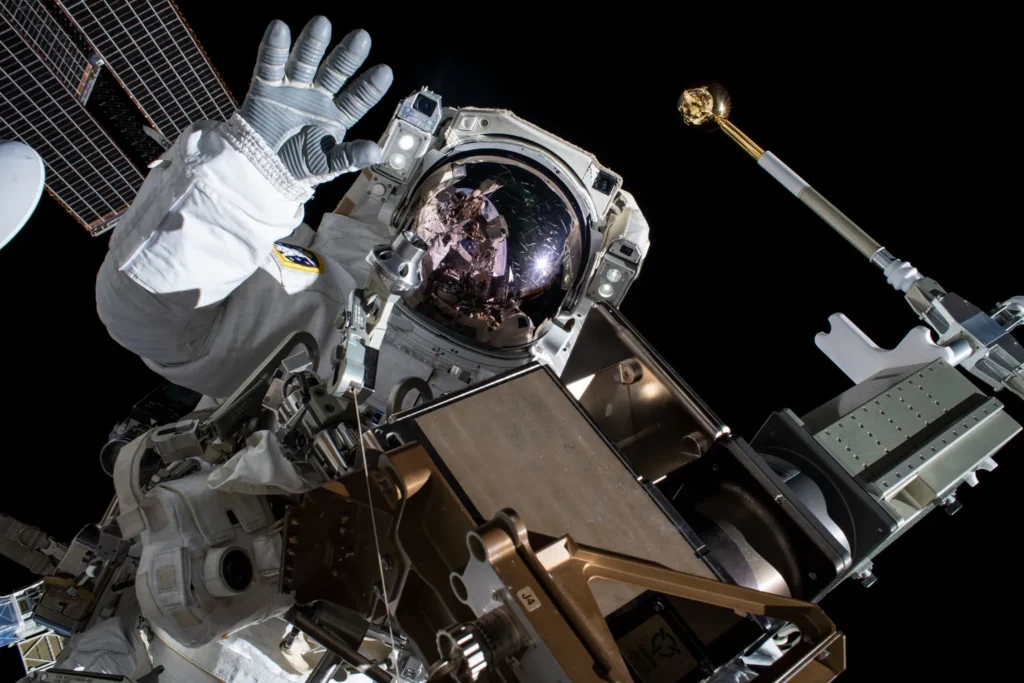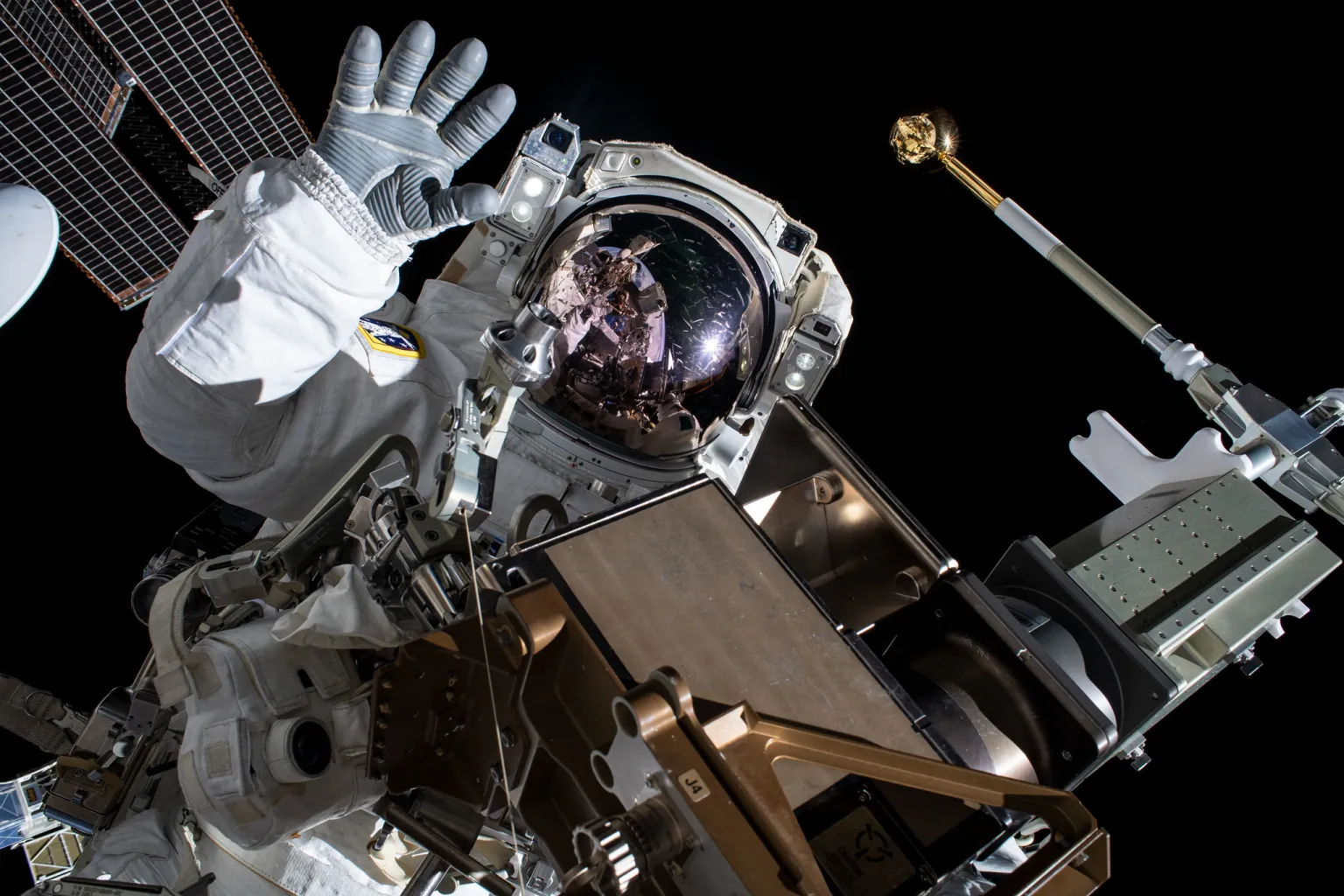NASA, spacewalks, ISS repairs, ISS upgrades, International Space Station, astronaut Christina Koch, astronaut Victor Glover, Alpha Magnetic Spectrometer, AMS repairs, space exploration, space station power upgrades, scientific research in space
Discover how NASA is gearing up for a series of crucial spacewalks aimed at repairing and upgrading the International Space Station. Learn about the objectives, the astronauts involved, and the broader implications for space exploration and scientific research.

The National Aeronautics and Space Administration (NASA) is gearing up for a series of spacewalks aimed at repairing and upgrading the International Space Station (ISS). These spacewalks are crucial for maintaining the operational efficiency of the ISS, ensuring the safety of the crew, and extending the station’s service life. In this article, we delve into the details of these upcoming spacewalks, the objectives, the astronauts involved, and the broader implications for space exploration and technology.
The Importance of Spacewalks
Spacewalks, also known as Extravehicular Activities (EVAs), are critical for the upkeep and enhancement of the ISS. These activities involve astronauts stepping outside the spacecraft to perform a variety of tasks, from installing new equipment and conducting repairs to conducting scientific experiments. Spacewalks are challenging and require extensive preparation, but they are essential for the continued success of the ISS mission.
Objectives of the Upcoming Spacewalks
1. Upgrading Power Systems
One of the primary objectives of the upcoming spacewalks is to upgrade the ISS’s power systems. The station relies on solar arrays to generate electricity, which is then stored in batteries for use during periods when the station is in the Earth’s shadow. The current batteries, made of nickel-hydrogen, are being replaced with more efficient lithium-ion batteries. These new batteries have a longer lifespan and provide more power, which is vital for the station’s operations and scientific research.
2. Repairing the Alpha Magnetic Spectrometer
Another critical task is the repair of the Alpha Magnetic Spectrometer (AMS). The AMS is a particle physics experiment module mounted on the exterior of the ISS. It is designed to study cosmic rays and search for evidence of dark matter and antimatter. The AMS has been operating since 2011 and has collected valuable data. However, it has encountered some issues with its cooling system, which is vital for its continued operation. The upcoming spacewalks will involve intricate repairs to this system, ensuring the AMS can continue its mission.
3. Installing New Equipment
In addition to repairs, astronauts will install new equipment on the ISS. This includes new scientific instruments, communication systems, and hardware that will support future missions. For instance, new cameras and sensors will be installed to enhance the station’s monitoring capabilities. These upgrades will help improve the efficiency of the ISS and support new scientific endeavors.
The Astronauts Involved
The success of these spacewalks hinges on the skills and expertise of the astronauts involved. NASA has a rigorous selection and training process to prepare astronauts for the challenges of EVAs. The crew for the upcoming spacewalks includes seasoned astronauts with extensive experience in space operations.
1. Christina Koch
Christina Koch is a NASA astronaut who holds the record for the longest single spaceflight by a woman, spending 328 days in space. She has participated in several spacewalks and brings a wealth of experience to the upcoming missions. Koch’s expertise in engineering and physics makes her a valuable asset for the complex tasks ahead.
2. Victor Glover
Victor Glover is another highly skilled astronaut who recently completed his first spaceflight as part of the SpaceX Crew-1 mission. Glover’s background as a test pilot and his proficiency in handling intricate technical tasks make him an excellent candidate for the upcoming EVAs. His participation underscores the collaboration between NASA and commercial partners like SpaceX.
3. Other Crew Members
In addition to Koch and Glover, other astronauts will support the spacewalks from both inside and outside the ISS. This team effort ensures that all tasks are completed efficiently and safely. The coordination between crew members on the ISS and mission control on Earth is crucial for the success of these operations.
Preparation and Training
Preparing for spacewalks is a meticulous process that involves months of training and simulations. Astronauts undergo rigorous physical training to build the strength and endurance needed for EVAs. They also spend countless hours in the Neutral Buoyancy Laboratory (NBL), a large pool where they practice tasks in a simulated microgravity environment. This training helps them become familiar with the tools and procedures they will use during the actual spacewalks.
Broader Implications for Space Exploration
The upcoming spacewalks have broader implications beyond the immediate tasks at hand. They represent the ongoing commitment to maintaining and enhancing the ISS, which serves as a critical platform for scientific research and international cooperation in space.
1. Advancing Scientific Research
Upgrades and repairs to the ISS’s equipment directly impact the quality and quantity of scientific research conducted onboard. The ISS supports a wide range of experiments in fields such as biology, physics, and earth science. Improved power systems and new instruments enable more advanced research, leading to discoveries that benefit humanity.
2. Preparing for Future Missions
The skills and technologies developed during these spacewalks also contribute to future space missions. For example, the experience gained from repairing the AMS and upgrading power systems will inform the design and maintenance of future space habitats and exploration vehicles. This knowledge is crucial as NASA prepares for missions to the Moon, Mars, and beyond.
3. Strengthening International Collaboration
The ISS is a symbol of international collaboration, with participation from space agencies around the world, including NASA, Roscosmos, ESA, JAXA, and CSA. The upcoming spacewalks highlight the cooperative efforts required to maintain and operate the station. This collaboration extends to sharing scientific data and technologies, fostering a global approach to space exploration.
Conclusion
NASA’s upcoming spacewalks for station repairs and upgrades are vital for the continued success of the International Space Station. These activities not only ensure the station’s operational efficiency but also support scientific research and prepare for future space missions. The dedication and expertise of the astronauts involved, coupled with the meticulous preparation and international collaboration, underscore the significance of these spacewalks. As we look to the future of space exploration, the lessons learned and advancements made during these EVAs will pave the way for new discoveries and ventures beyond our planet.
Read More-
- NASA Awards Cutting-Edge Technologies for Future Habitable Worlds Mission
- NASA PREFIRE Mission: Tiny Satellites Measuring Earth Polar Heat Loss
- NASA Launches Tiny CubeSat to Revolutionize Earth Observation
- Boeing and NASA Proceed with Starliner Launch Despite Helium Leak










